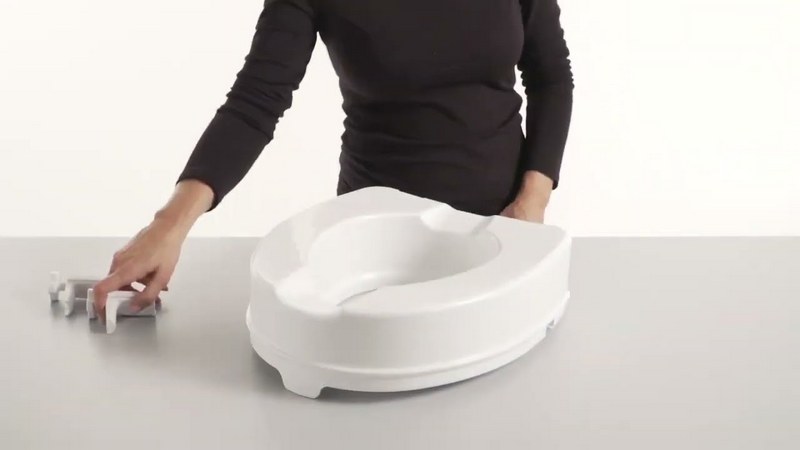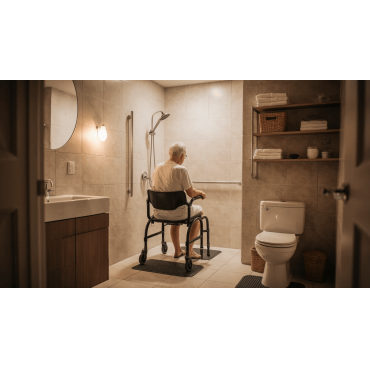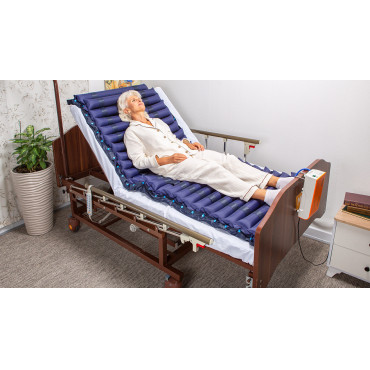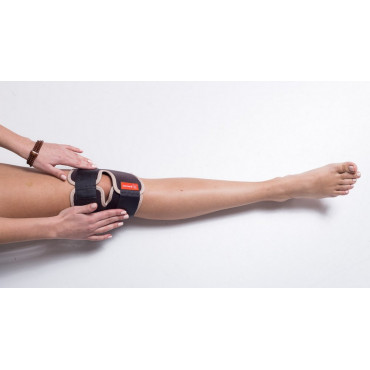After hip replacement surgery, patients need to follow certain doctor's recommendations to avoid complications and speed up the recovery process after such an important operation.
One of the important elements of the postoperative period is the use of a special toilet seat. It helps reduce the load on the operated limb and prevent excessive hip flexion, which can lead to joint dislocation.
Why is it important to use a toilet seat after hip replacement surgery?
Doctors advise using a toilet seat in the toilet from the first day after surgery until the end of at least the third month of rehabilitation. This is necessary in order to:
- Prevent excessive hip flexion. The standard height of the toilet can cause too much flexion in the hip joint, which increases the risk of dislocation of the endoprosthesis.
- Reduce the load on the limb. Using the attachment allows the patient to maintain the correct body position, minimizing pressure on the operated leg.
- Ensure comfort and safety. A toilet seat helps to avoid sudden movements and discomfort when using the toilet, and also reduces the risk of falls.
Before buying a toilet seat, you should familiarize yourself in detail with the models presented on the website of the MED1 online medical equipment store.
Types of toilet seats
 There are several main types of toilet seats, which differ in height, method of attachment and additional functions:
There are several main types of toilet seats, which differ in height, method of attachment and additional functions:
1) Standard seats. Increase the height of the toilet by 5-15 cm, usually made of durable plastic.
2) Sealing seats with clamps. Secured with special clamps, which provides additional stability.
3) Sealing seats with armrests. Equipped with convenient handrails for support when sitting down and getting up.
4) Adjustable nozzles. Allows you to change the height according to the patient's needs.
How to properly install and care for the toilet nozzle?
In order to correctly use the toilet nozzle as a means of rehabilitation after hip replacement, you must correctly install it on your home toilet.
It is quite simple to do this, for this you need to follow our instructions:
- Clean the surface of the toilet before installation to avoid slipping.
- Fasten the nozzle according to the manufacturer's instructions. Most models have special mounts or rubber stops.
- Check the stability before use to make sure that the nozzle does not move when sitting or standing up.
To keep the nozzle looking neat and serving you longer, you need to treat it with care. Follow 3 simple rules:
- Regular cleaning. Wipe the nozzle with a damp cloth or wash in warm water with a mild detergent.
- Disinfection. Treat the entire surface of the toilet nozzle with an antiseptic at least once a week.
- Check the fasteners. Periodically check to see if the clamps or screws have loosened.
Using a toilet nozzle after hip replacement is an important step in the rehabilitation process. It helps reduce the load on the joint, reduces the risk of complications and makes recovery more comfortable.
The choice of the appropriate model depends on the patient's needs, but the main thing is proper installation and care of the device. By following these recommendations, you can significantly facilitate everyday life after surgery and avoid undesirable consequences.



-370x370.jpg)
-370x370.jpg)

-370x370.png)



-370x370.jpg)